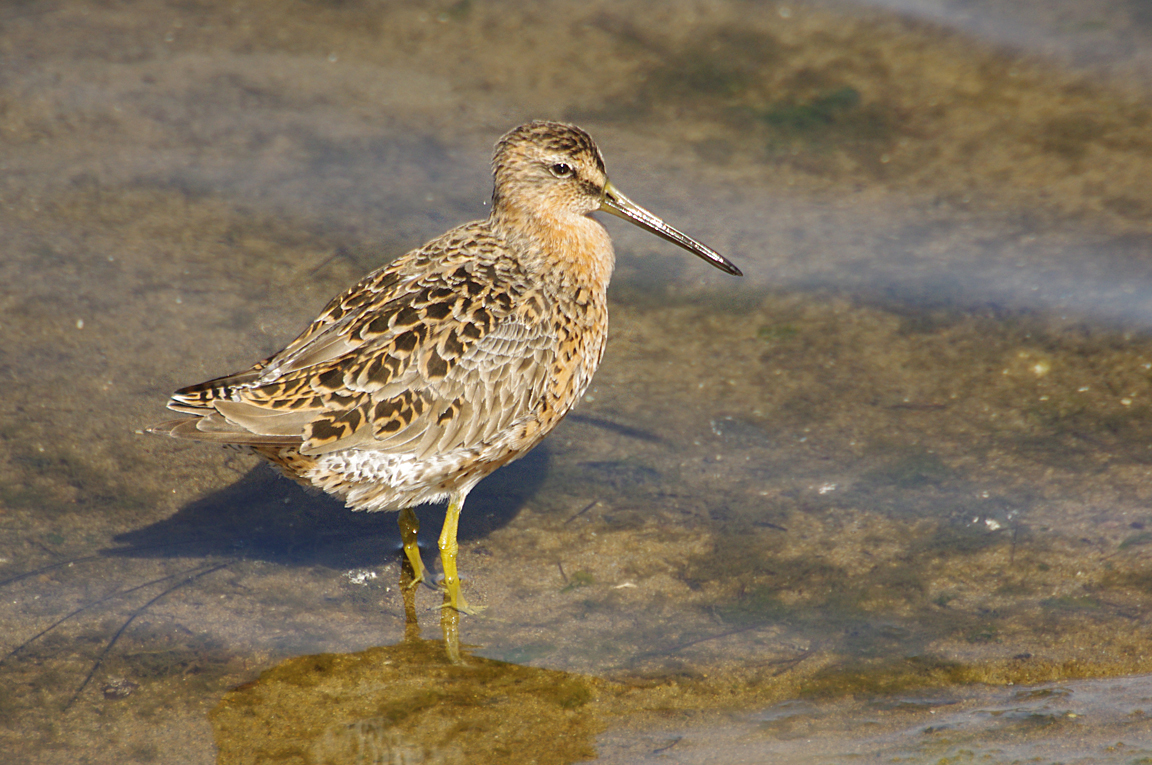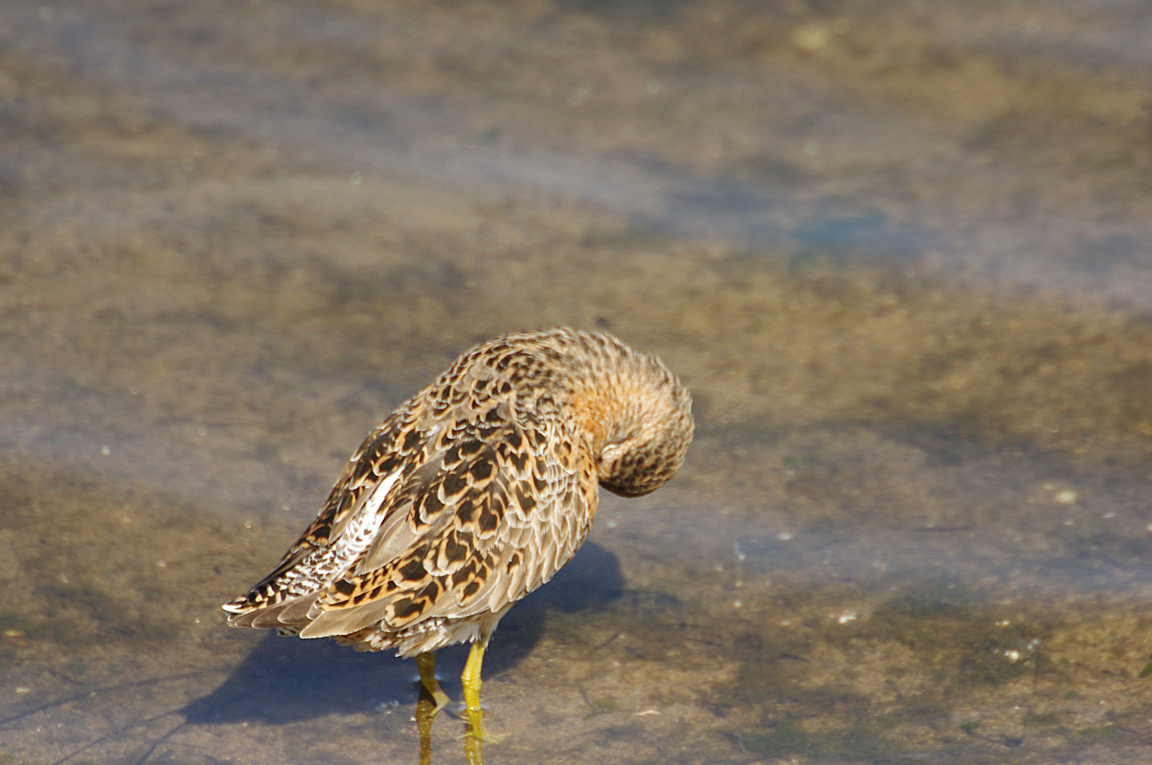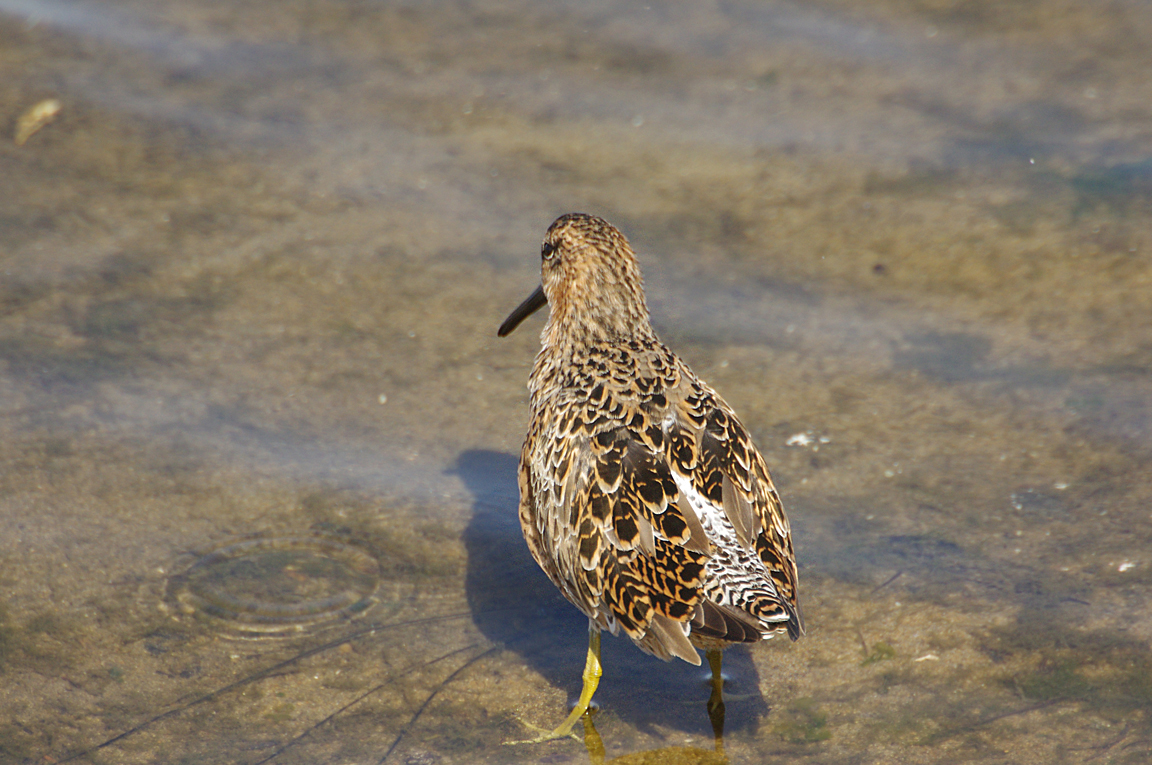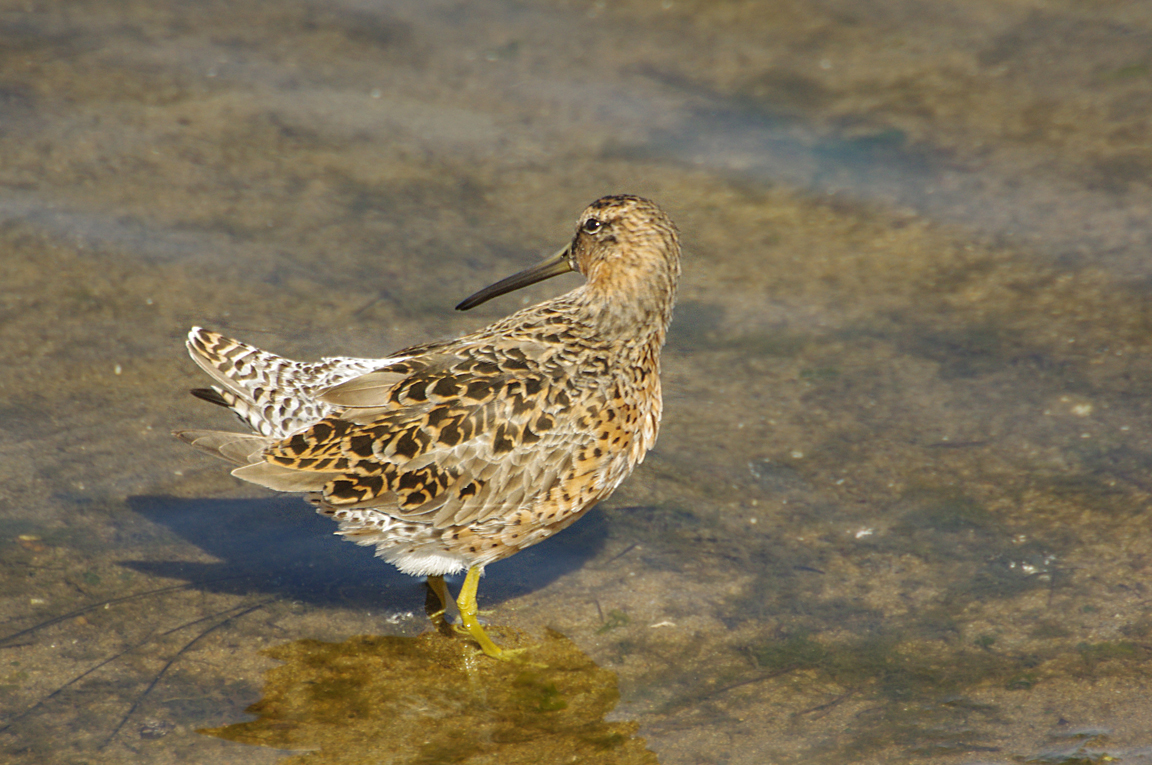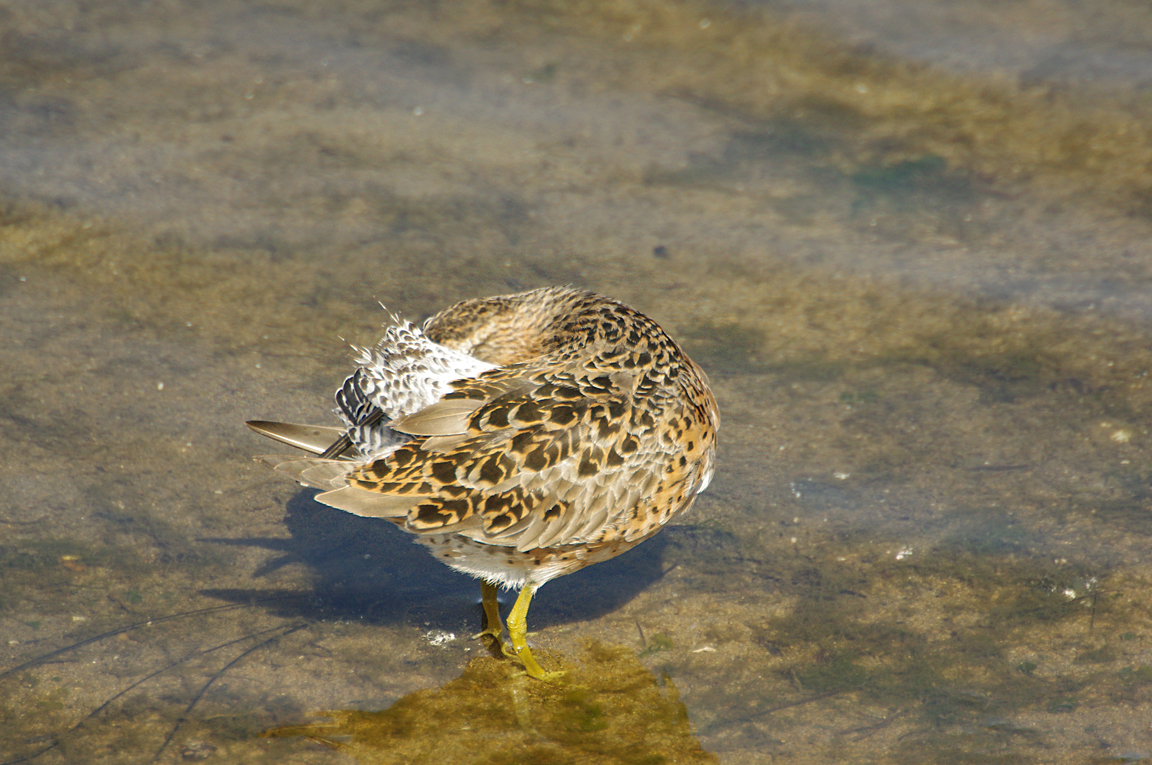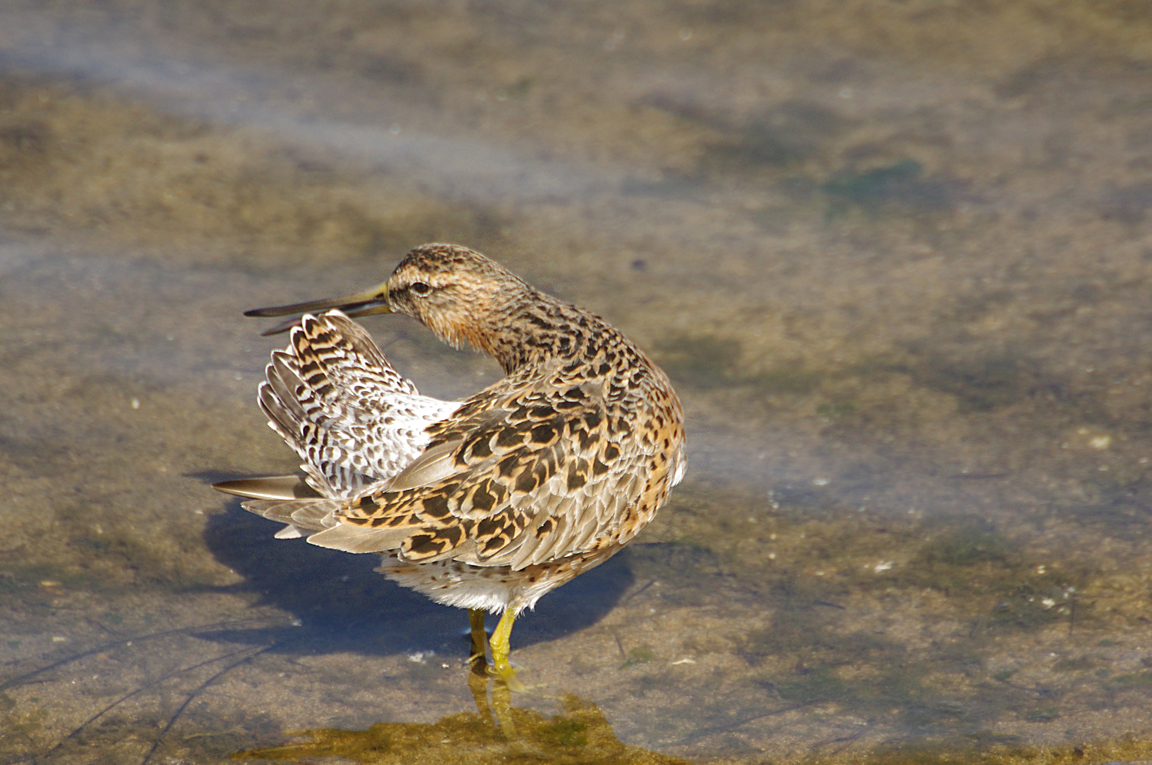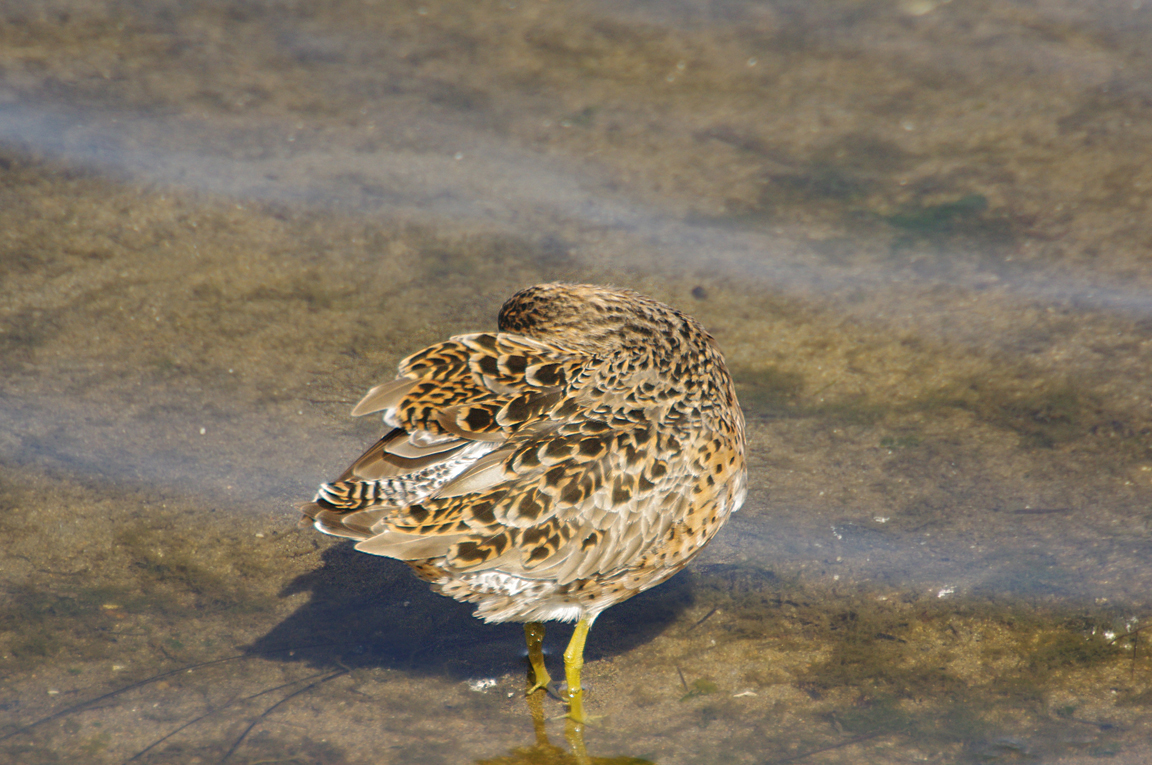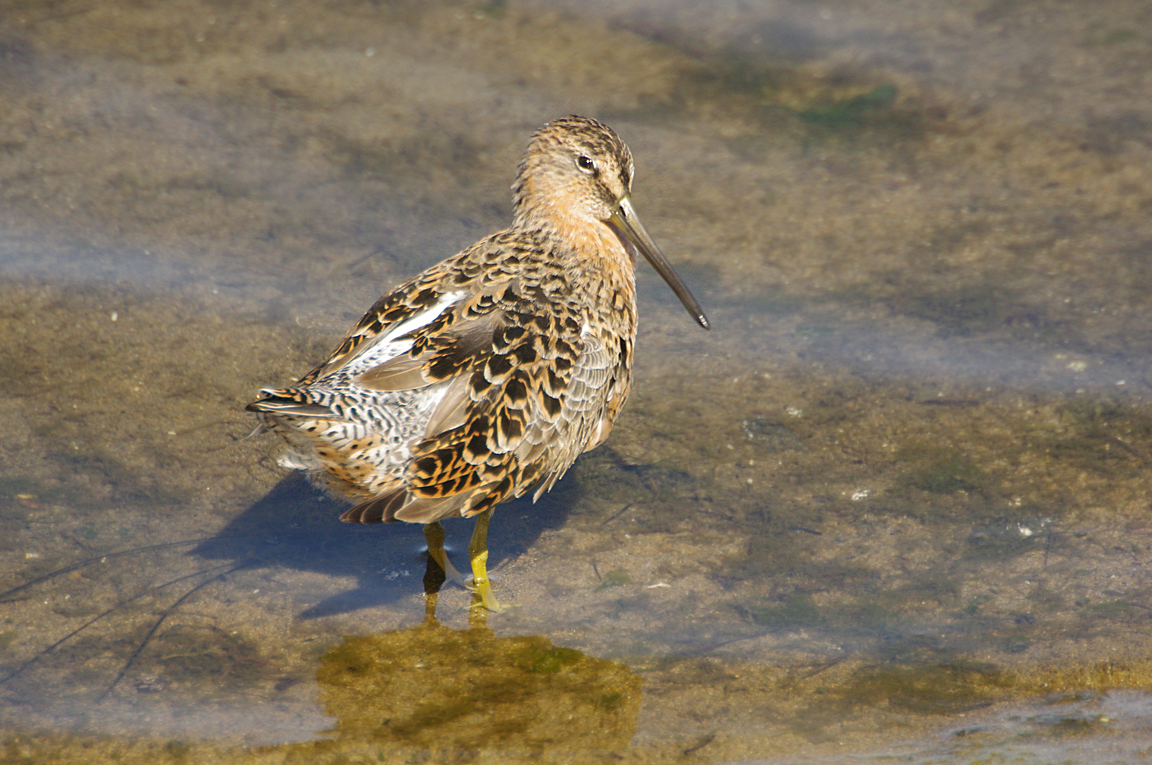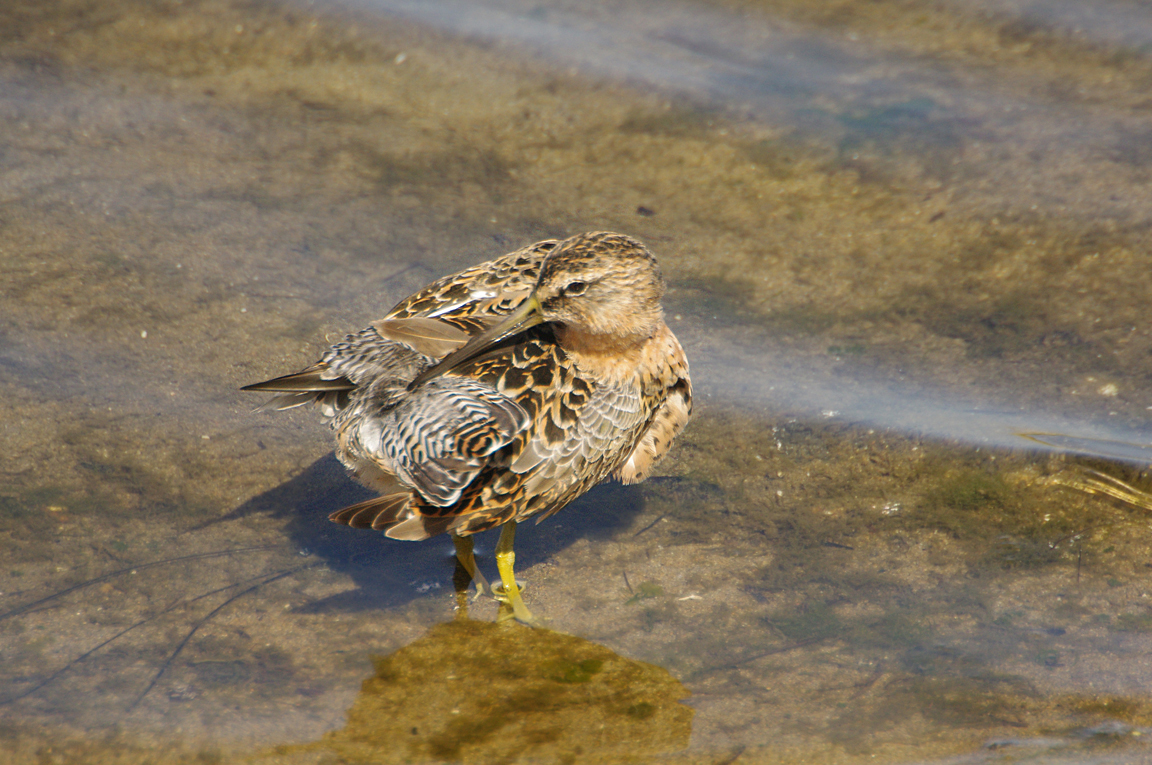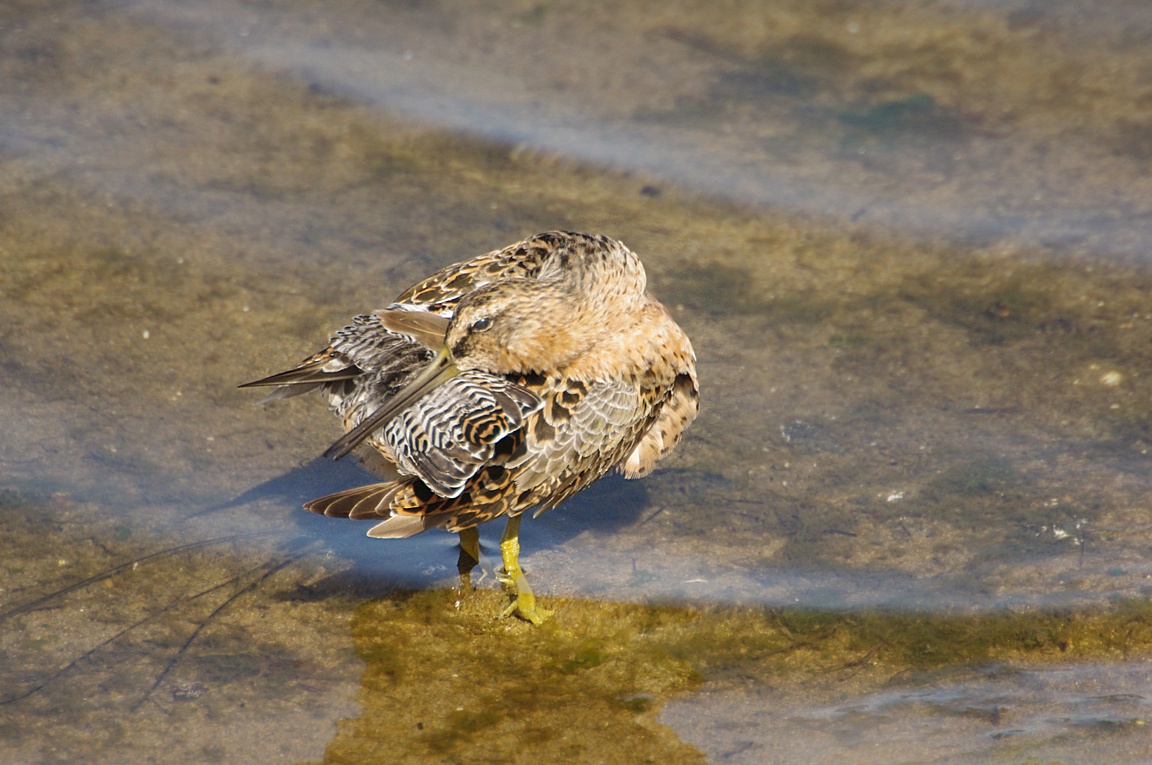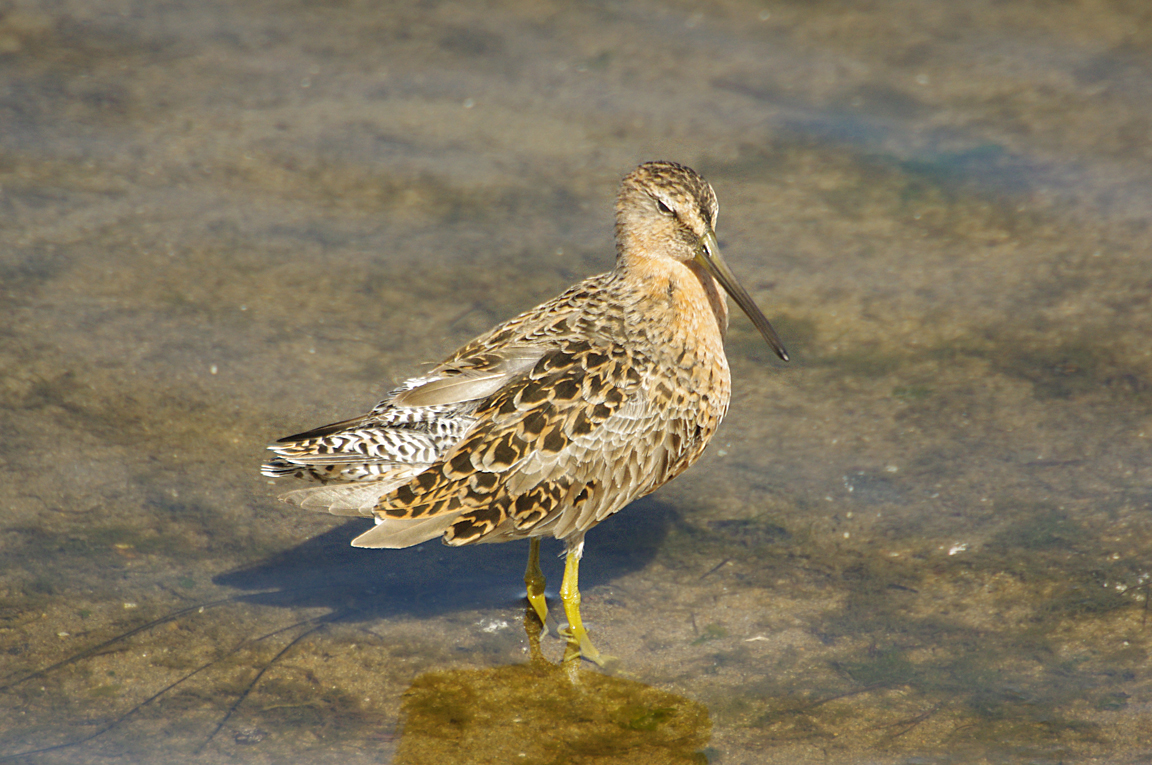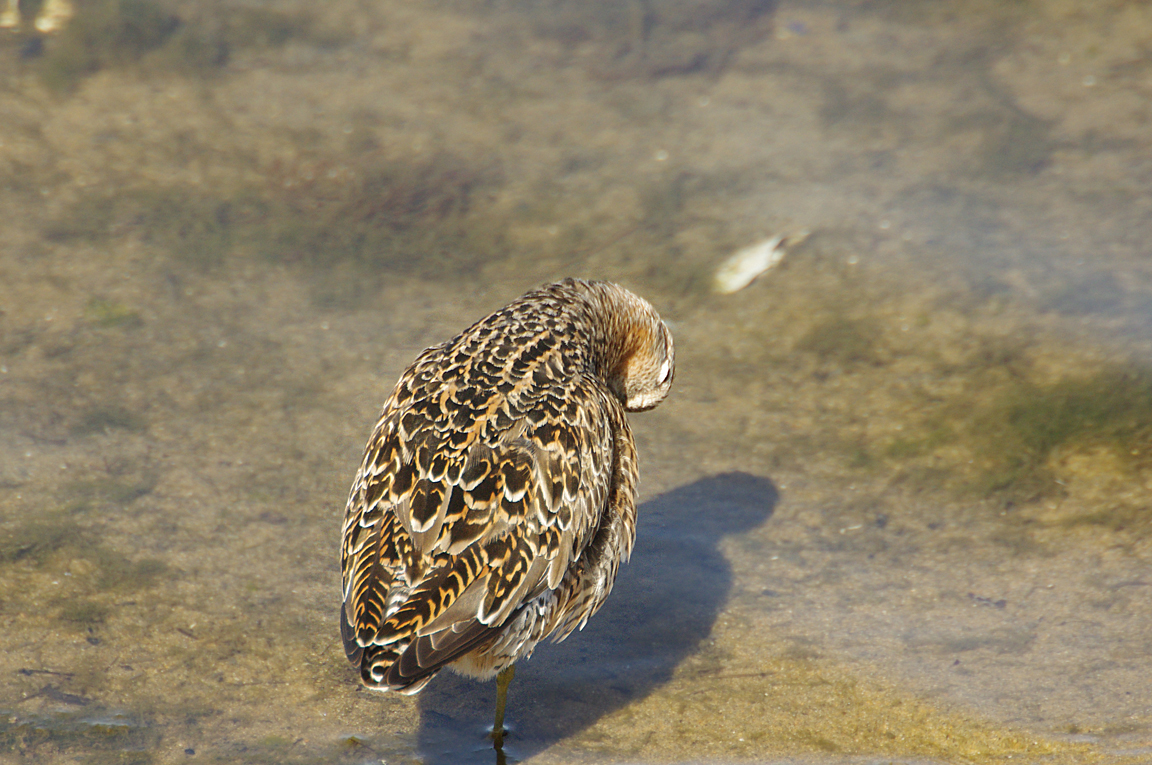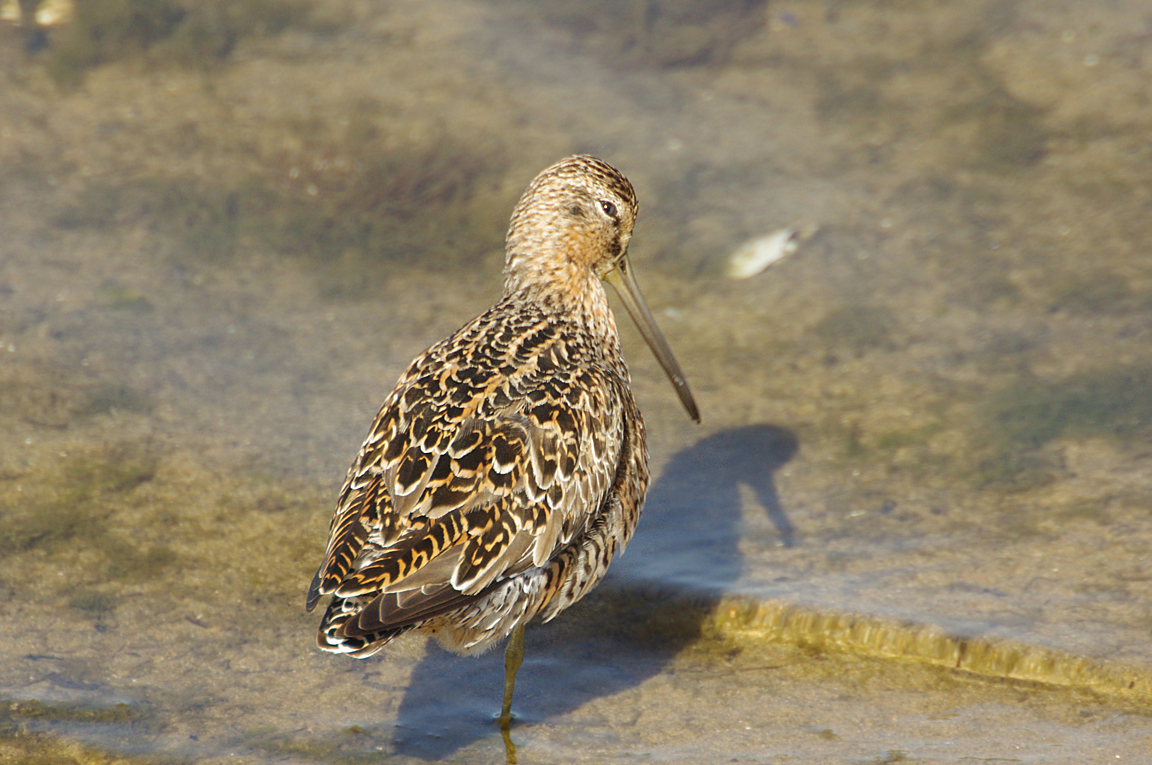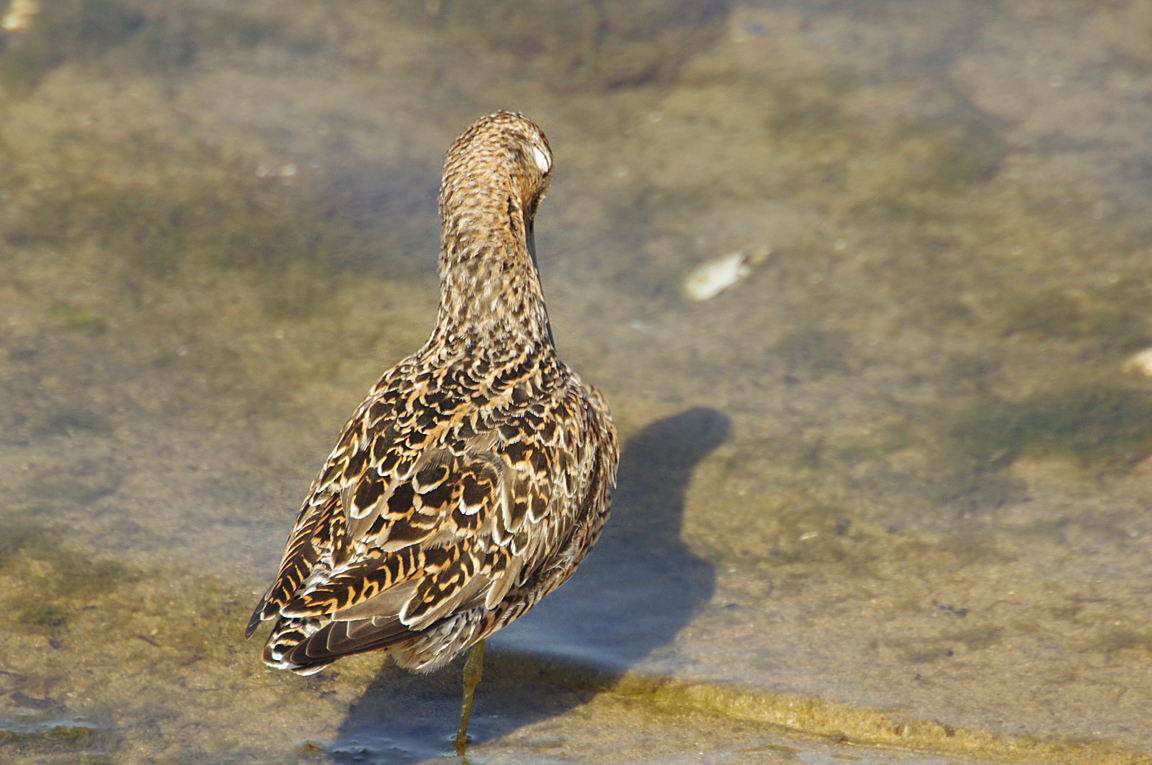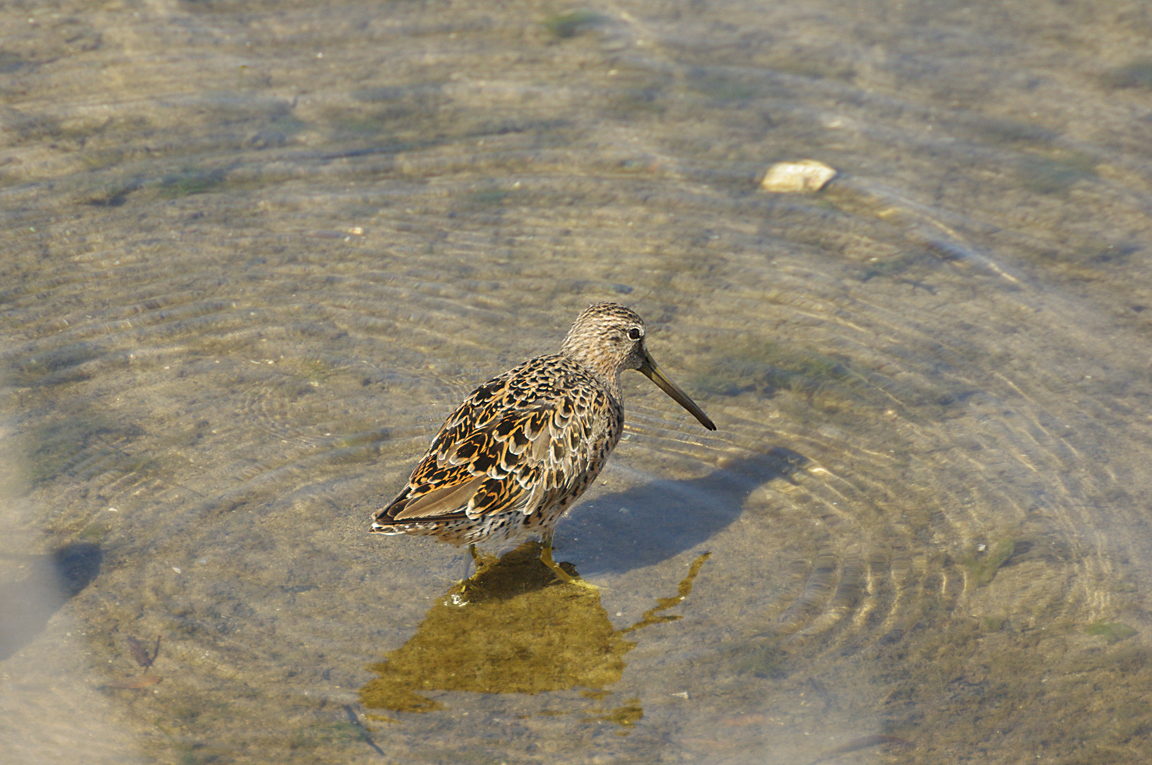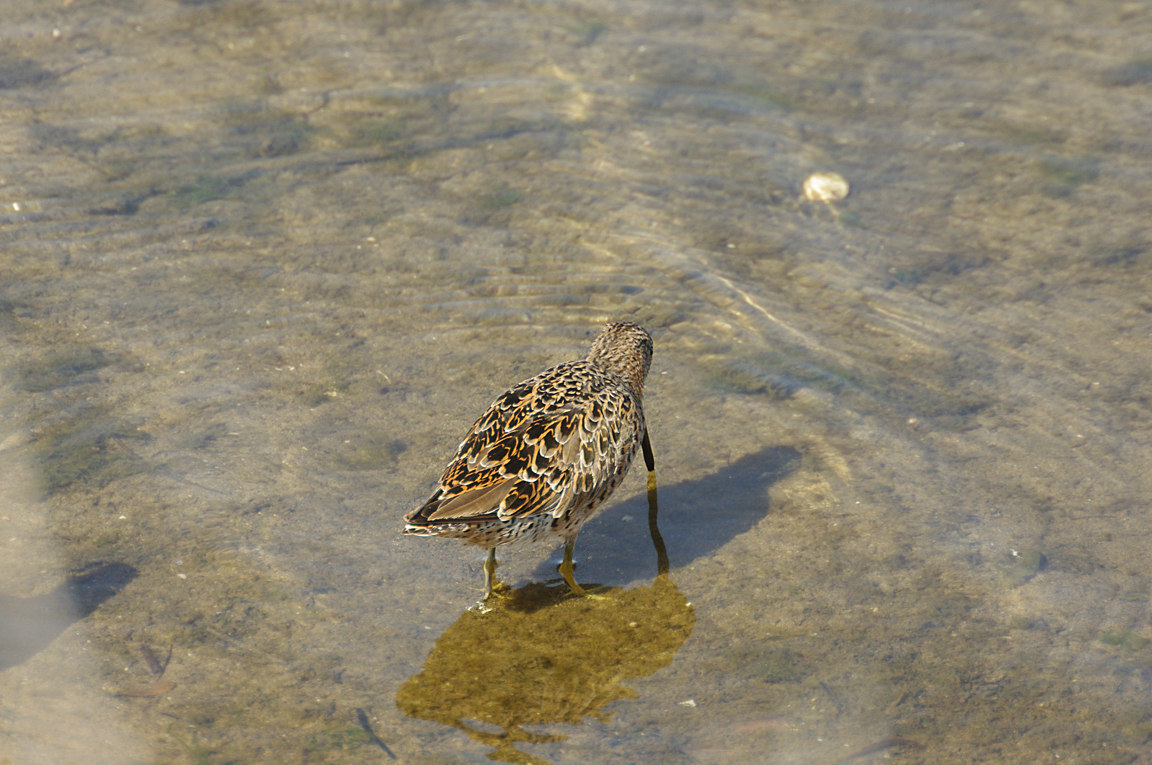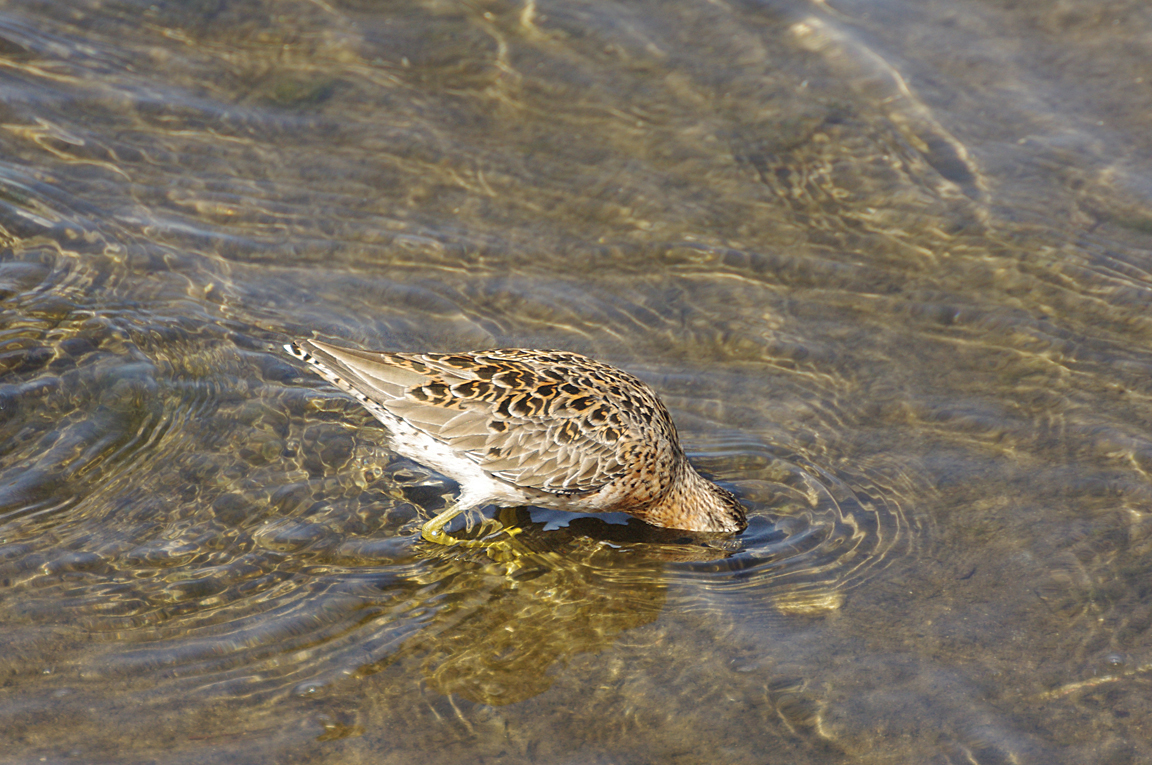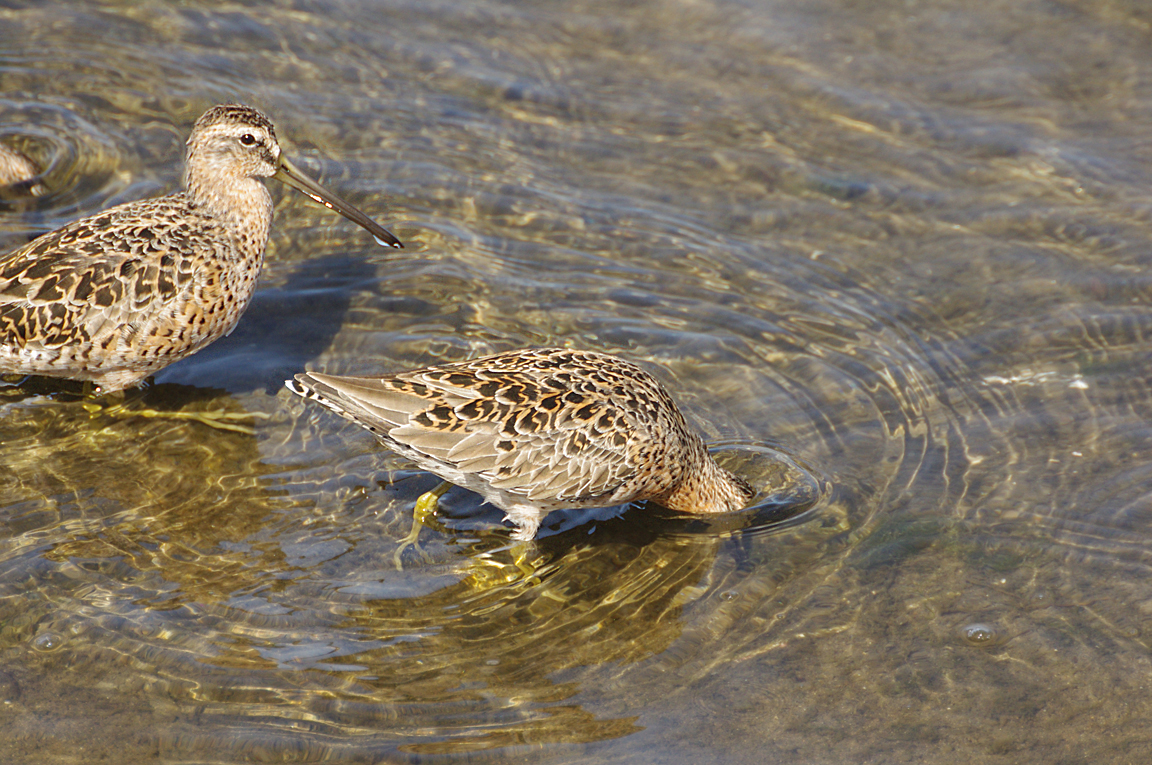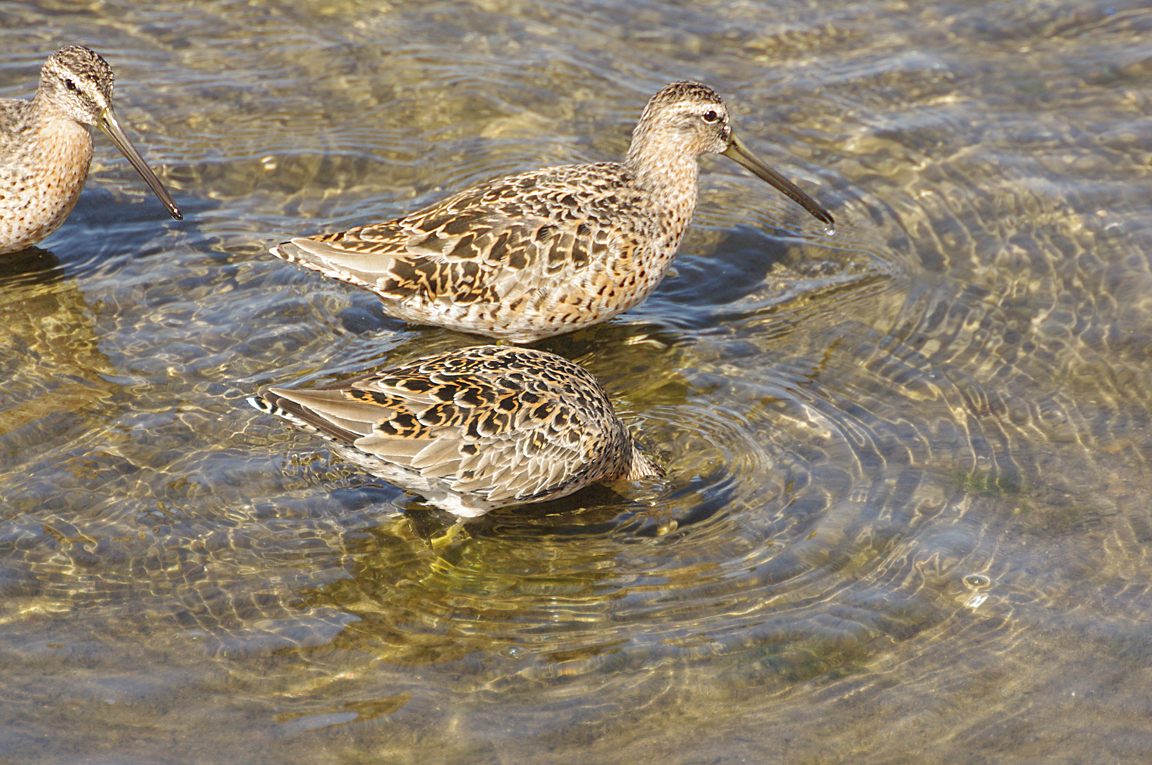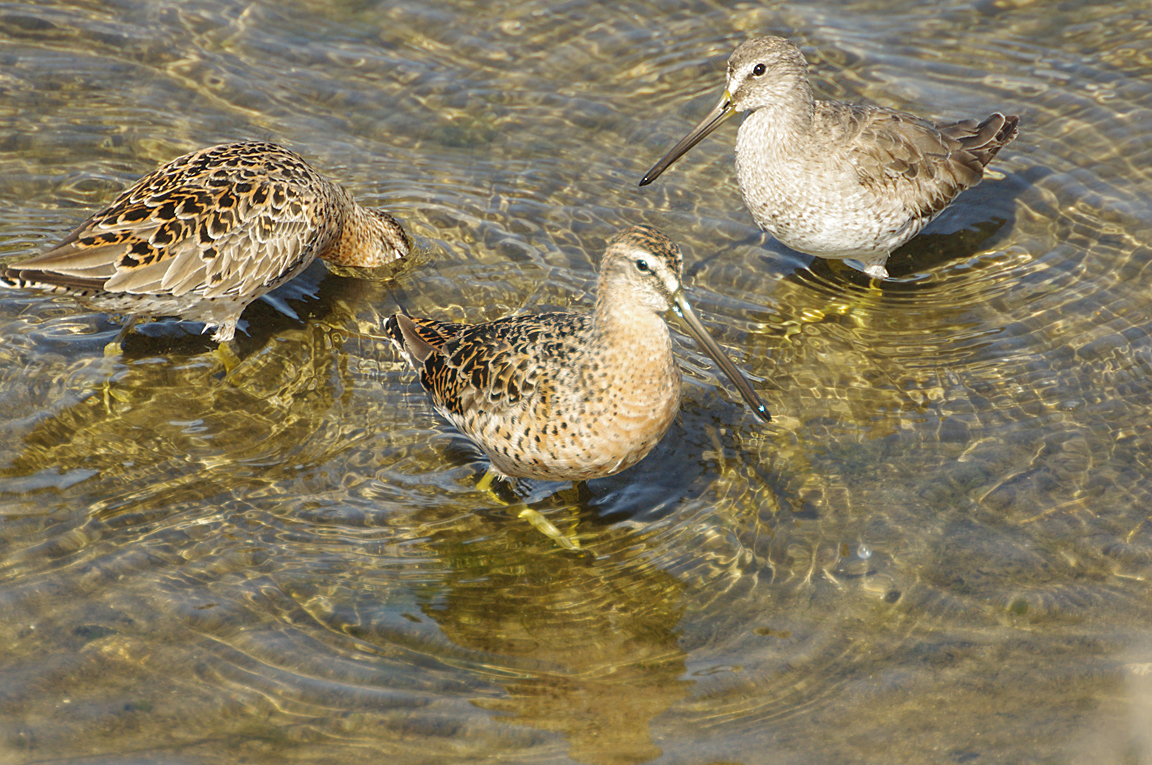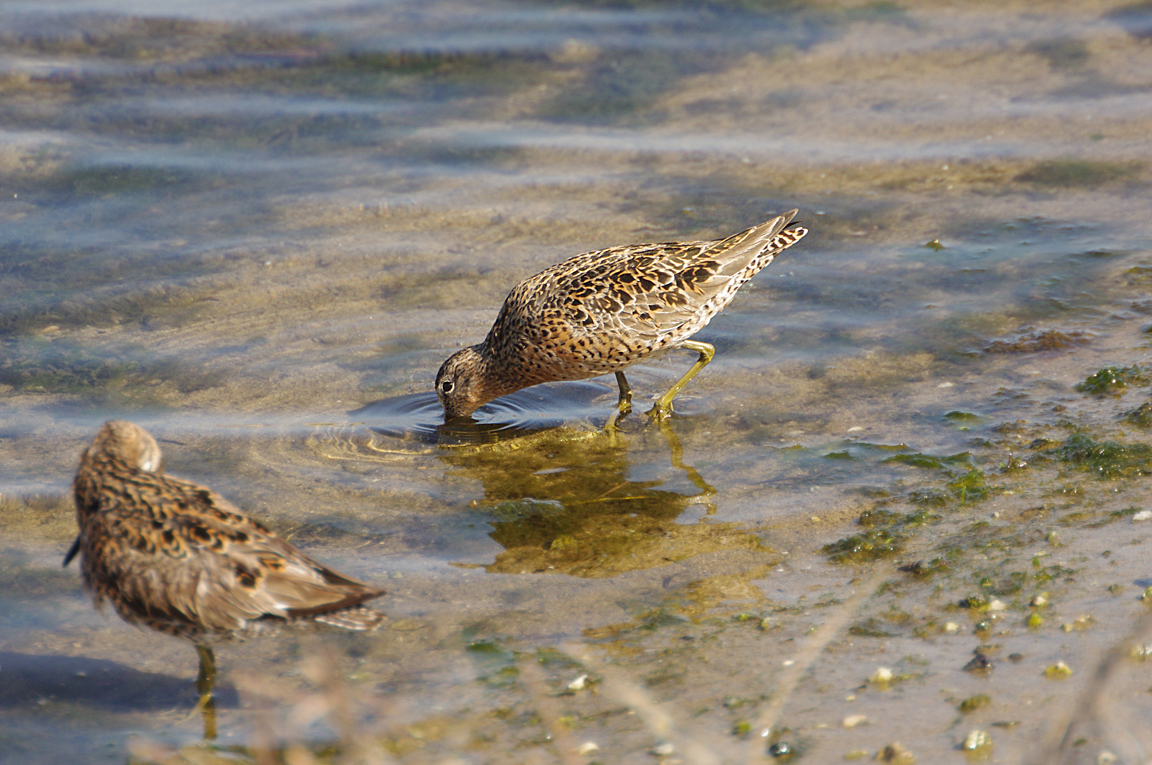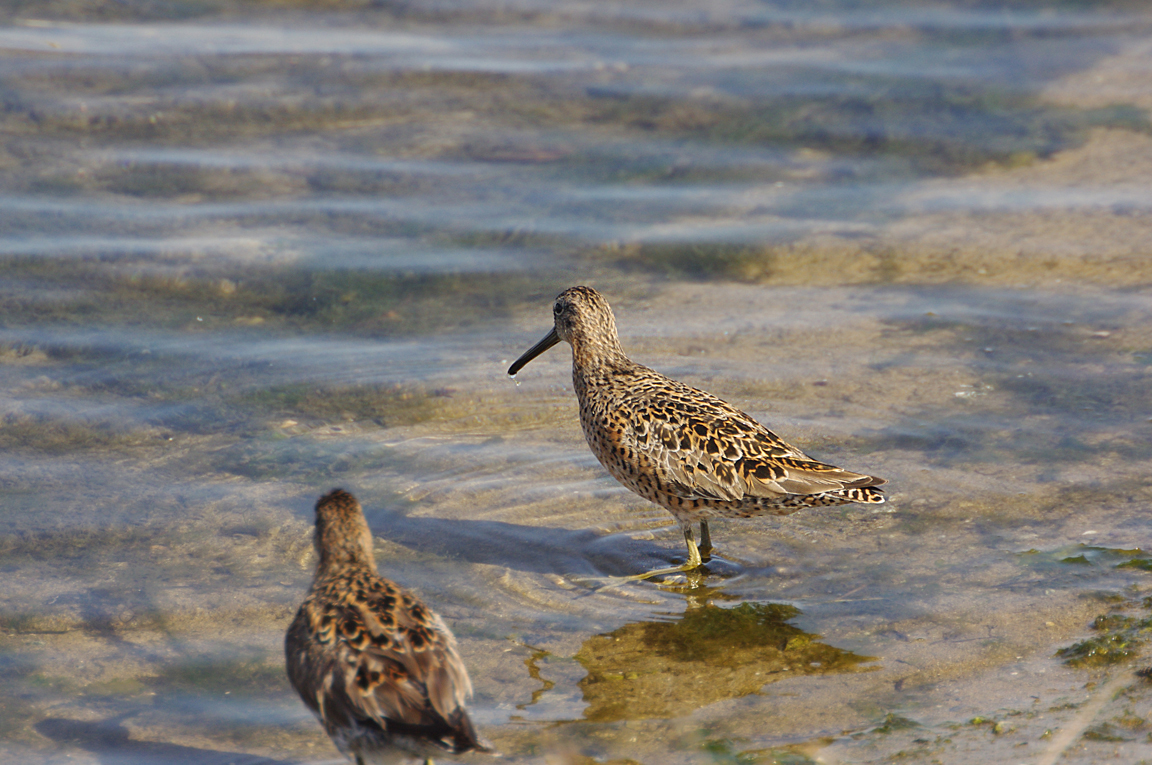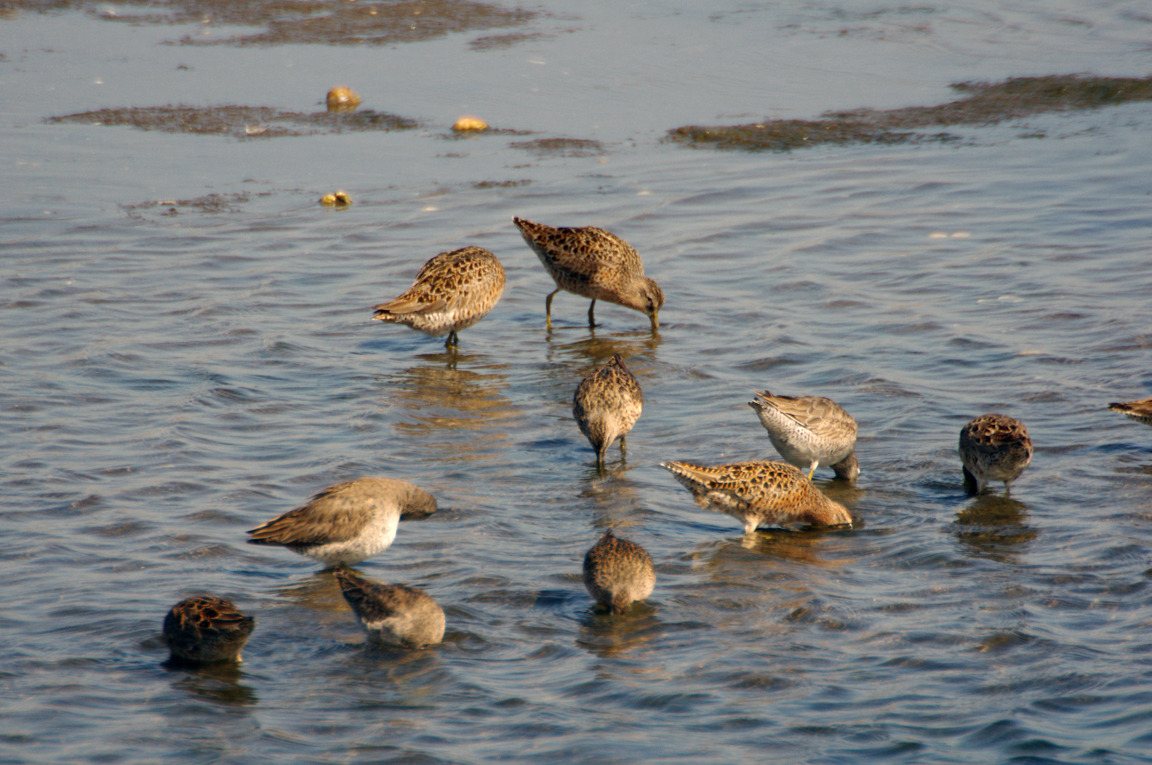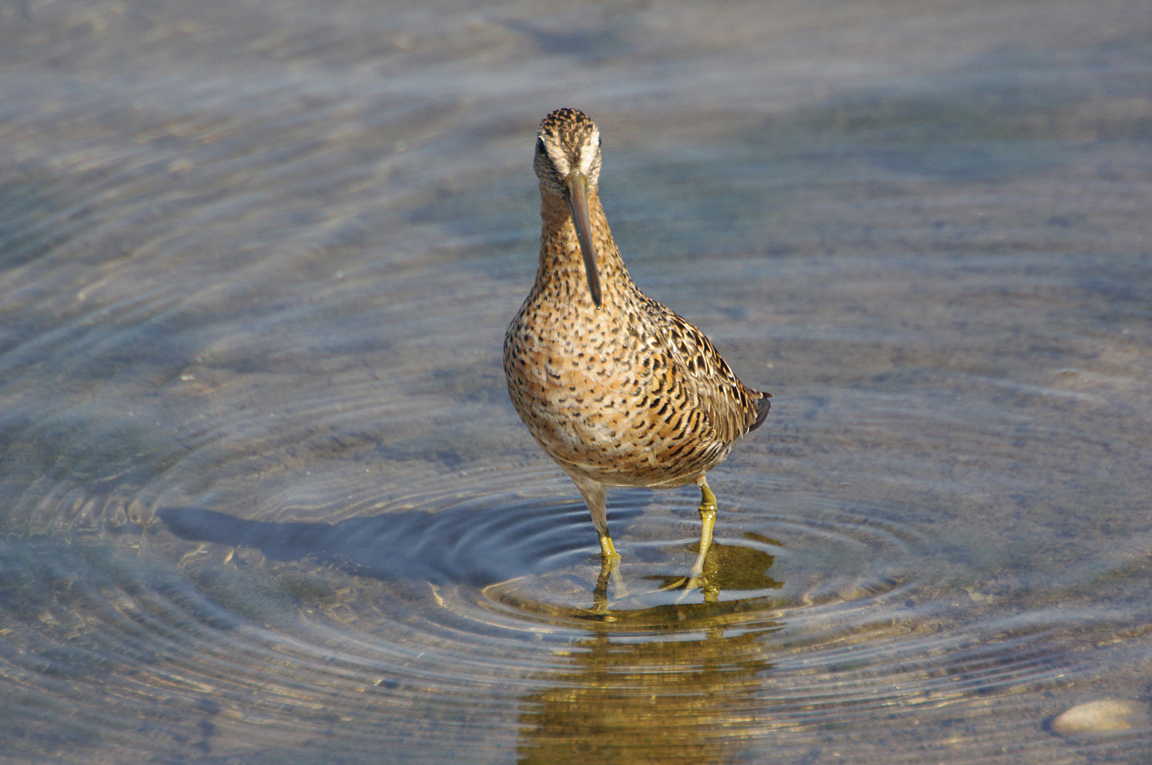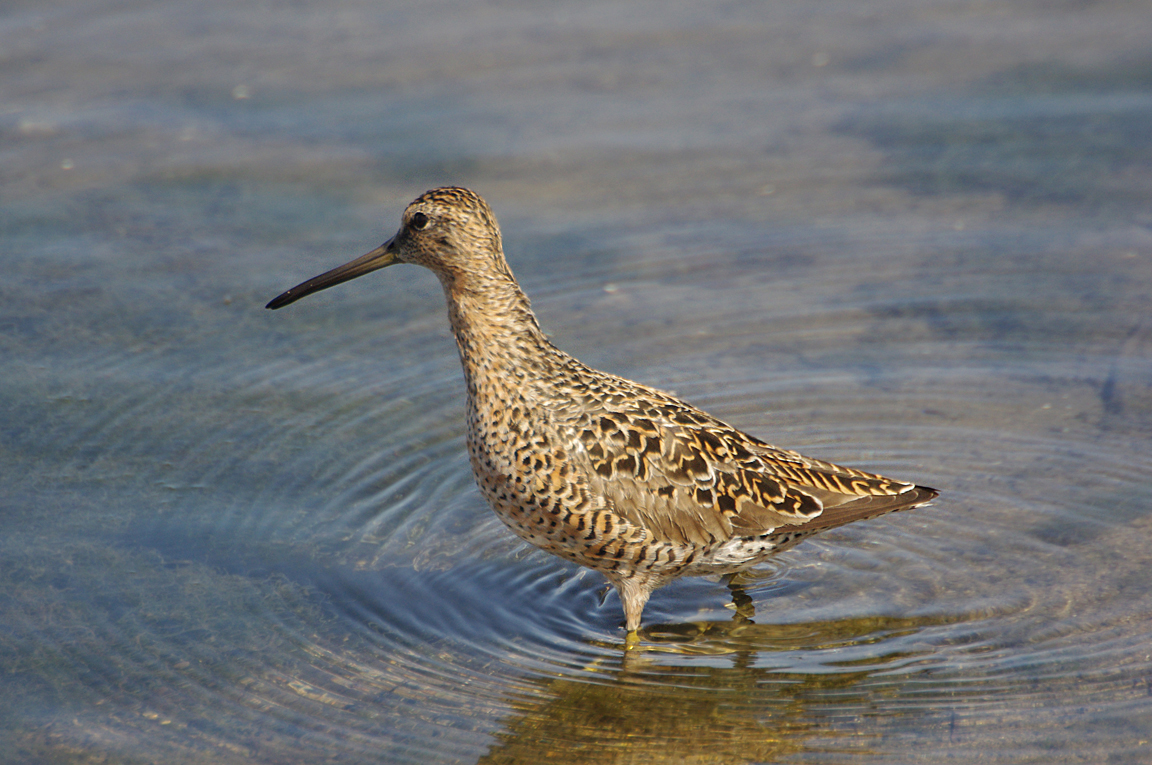|
|
|
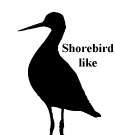 |
Short-billed Dowitcher
|
| Limnodromus griseus | |
A medium to large shorebird with a long bill, the Short-billed Dowitcher is a common and conspicous migrant that uses a "sewing-machine" method of foraging across the mud flats. Its long bill is short only in comparison with the very similar Long-billed Dowitcher.
Interesting Information
-
The nest and eggs of this species eluded discovery until 1906, and even that information was overlooked for a long while because they were attributed to the Long-billed Dowitcher. The nesting grounds of the eastern race were not discovered until the late 1950s.
-
Although both sexes share incubation of the eggs, only the male takes care of the young once they hatch.
-
Until 1950, the Short-billed Dowitcher and Long-billed Dowitcher were considered to be one species.
-
The name of this bird can be somewhat misleading, as its bill is only short in comparison with the Long-billed Dowitcher.A group of sandpipers has many collective nouns, including a "bind", "contradiction", "fling", "hill", and "time-step" of sandpipers.
Description
Adult Description
-
A medium-sized shorebird with a bill twice as long as its head.
-
Moderately long, pale legs.
-
Length Range: 27-30 cm (10.5-12 in)
-
Weight: 108 g (3.8 oz)
-
Size: Medium (9 - 16 in)
-
Color Primary: Brown
-
Underparts: Pale rust-brown with heavy brown spots and bars.
-
Upperparts: Brown-black feathers with pale brown edges.
-
Back Pattern: Striped or streaked
-
Belly Pattern: Solid
-
Breast Pattern: Spotted or speckled, Solid
Sex Differences
Sexes Similar
Immature
Juvenal plumage with buffy chest and flanks, less spotting and barring than breeding adults. Back feathers dark centered with broad buffy edges, giving a slightly scaly appearance. Tertials dark with orange pattern inside ("tiger-striped").
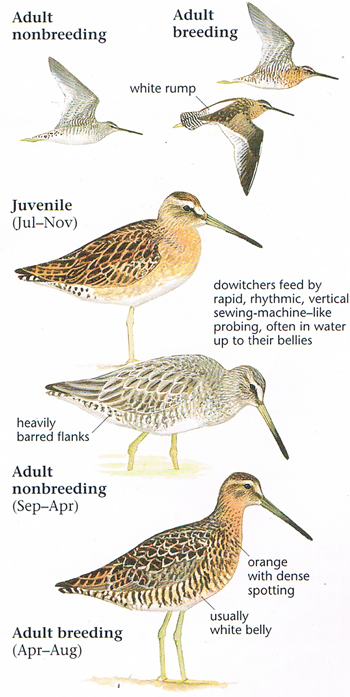
Photo taken from: The Sibley Field Guide by David Allen Sibley
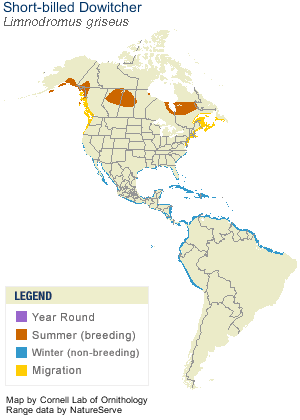
© 2003 Cornell Lab of Ornithology
|
Habitat |
|
|
Behavior |
|
Male sings in flight on breeding grounds.Probes deeply into soft substances to the depth of the bill, sometimes submerging the head. Food is captured and swallowed under the mud, except for worms, which are pulled to the surface. Feeds in water up to the depth of the belly. |
|
Food |
|
Aquatic invertebrates. On breeding grounds eats fly larvae, other insects, snails, and some seeds. |
Taxonomy
| Kingdom: | Animalia |
| Phylum: | Chordata |
| Subphylum: | Vertebrata |
| Class: | Aves |
| Order: | Charadriiformes |
| Family: | Scolopacidae |
| Genus: | Limnodromus |
| Species: | Limnodromus griseus |
| Subspecies: | Limnodromus griseus caurinus |
| Limnodromus griseus griseus | |
| Limnodromus griseus hendersoni |
Similar Species |
|
|
Bird Sound |
|
Flight call a melodic "tu" repeated up to four times. |
|
Eggs look like this |
|
Photo taken from: ARCTOS Collaborative Collection Management Solution |
